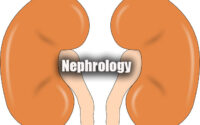Rachana Sharir Questions and Answers
Rachana Sharir Questions and Answers are available for Ayurveda students and teachers. Applicants can download Rachana Sharir Old Question Papers pdf. Also, get the Study material, Preparation tips in addition to the Rachana Sharir.

On our page, we provide Rachana Sharir Previous Papers for the sake of aspirants. Therefore, download the Rachana Sharir Previous Papers and start your preparation. Also, check the Rachana Sharir Syllabus and Exam Pattern from the below sections.
Questions and Answers on Rachana Sharir
1. According to Charaka’s opinion, how many types of Purusha are there on the basis of Dhatu bhed?
(1) 3
(2) 6
(3) 5
(4) 8
2. According to Acharya Sushruta, who is said to be a cause of all the Bhutas in the order of creation?
(1) God
(2) Soul
(3) Avyakt
(4) Nature
3. According to Charaka, which among the following are the two classifications of Sharir dhatu?
(1) Mala-Prasad Dhatu Bhava
(2) Agneya-Saumya Dhatu Bhava
(3) Khadyasha-Chetana Dhatu Bhava
(4) Satvik-Rajas Bhava
4. Due to which defect, Acharya Sushruta has told Shukra to be Kunapagandhi?
(1) Pitta
(2) Blood
(3) Pitta Kapha
(4) Pitta Vata
5. According to Charaka, which type of Aahar provides nourishment to fetus?
(1) Upasneha and Upasweda of Garbhashaya
(2) Aahar-Saushthava Bhava
(3) Svabhava-Sansiddhi Bhava
(4) None of the above
6. According to Kashyap, what develops in the womb in 5th month?
(1) Mamsa and Rakta
(2) Bala and Vama
(3) Manas and Buddhi
(4) Virya and Oja
7. Which of the following pregnancy deformity is said to occur due to continuous consumption of Shleshma Kopaka Bhavas by pregnant woman as mentioned in Ashtanga Sangraha Sharir Sthan?
(1) Deaf
(2) Blind by birth
(3) Birth with teeth
(4) Dumb
8. According to Charaka, which of the following Bhava develops in the sixth month of garbha kala?
(1) Bala varna upchaya
(2) Mamsa shonita upchaya
(3) Sthiratva bhava dhyate
(4) None of the above
9. According to Charaka, which is Sharir vriddhikara bhava?
(1) Aahar Parinamkar bhava
(2) Matraj-Pitrajadi bhava
(3) Swabhava Sansidhhi bhava
(4) None of the above
10. Acharya Sushruta has described the nature Of a person who eats alone (Ekashin)to be-
(1) Demonic
(2) Monster
(3) Vampire
(4) Serpentine
11. Which of the following is not a Pitraja Bhava according to Charaka’s opinion?
(1) Heart
(2) Vein
(3) Artery
(4) Snayu
12. According to the Charaka Samhita, which part of the body was first born in the womb as per Bhadrakapya Rishi?
(1) Heart
(2) Navel
(3) Senses
(4) Head
13. Which bhava develops in 4 month of 4 gestation, according to Acharya Charaka?
(1) Dauhridaya avastha
(2) Sthiratava
(3) Both (1) & (2)
(4) None of the above
14. Which among the following is the sixth dhatu of garbha, according to Charaka?
(1) Rasa Dhatu
(2) Rakta Dhatu
(3) Aatma
(4) None of the above
15. Spleen develops in –
(1) dorsal mesogastrium
(2) ventral mesogastrium
(3) midgut
(4) foregut
16. How much finger measurement has been mentioned by Acharya Charaka as the Pramana of Axilla in the Vimana Sthana?
(1) 4
(2) 6
(3) 8
(4) 12
17. Acharya Sushruta has described the length; of female intestine as how much less than that of men?
(1) 1/4 Vyama
(2) 1/2 Vyama
(3) 3/4 Vyama
(4) 1 Vyama
18. According to Charaka, which Dhatu provides nourishment to Shukra and Artava?
(1) Rasa dhatu
(2) Rakta dhatu
(3) Rasa and Rakta dhatu
(4) None of the above
19. Acharya Sushruta has mentioned the number of muscles in the breast region as
(1) 8
(2) 5
(3) 10
(4) 16
20. How is Portal Vein formed?
(1) Union of inferior Mesenteric and Splenic Vein
(2) Union of superior Mesenteric and Splenic Vein
(3) Union of superior Mesenteric and inferior Mesenteric
(4) Union of Splenic, superior and inferior Mesenteric Vein
| Kayachikitsa | Shalakya Tantra |
| Dravyaguna Vigyan | Panchakarma |
| Rachana Sharir | Shalya Tantra |
| Prasuti Tantra | Rog Nidan |
| Kriya Sharir | Agad Tantra |
21. Dominance of Pitta leads to which Netra Varna according to Acharya Sushruta?
(1) Raktakshay
(2) Pingakshya
(3) Shleshmakshya
(4) None of the above
22. According to Acharya Sushruta, Sira, Snayu, Dhamni are situated in which kala?
(1) Mamsadhara kala
(2) Raktadhara kala
(3) Medodhara kala
(4) Sleshmadhara kala
23. Nerve supply of Stapedius muscle is by which nerve?
(1) trochlear nerve
(2) facial nerve
(3) trigeminal nerve
(4) oculomotor nerve
24. According to opinion of Acharya Sushruta, the stricture of Indrabasti Marma is —
(1) Sira Marma
(2) Asthi Marma
(3) Snayu Marma
(4) Mamsa Marma
25. What type of sandhi is present in Griva & Prishthavamsha according to Acharya Sushruta?
(1) Pratara-sandhi
(2) Kora-sandhi
(3) Mandala-sandhi
(4) None of the above
26. What is ‘Saranyctani Dehinam’ according to Sushruta?
(1) Shukra
(2) Asthi
(3) Sira
(4) Oja
27. According to Acharya Sushruta, which Marma does not have one finger Measurement?
(1) Vitap
(2) Kurcha
(3) Kurchashira
(4) Kakshadar
28. According to Acharya Sushruta, Parshva Sandhi Marma is what type of Marma?
(1) Sira Marma
(2) Sandhi Marma
(3) Asthi Marma
(4) None of the above
29. Which one of the following is not Vaikalyakara Marma according to the opinion of Acharya Sushruta?
(1) Janu Marma
(2) Kurpara Marma
(3) Gulpha Marma
(4) Ansa Marma
30. According to Acharya Sushruta, injury on Avarta marma results in –
(1) Andhata
(2) Murcha
(3) Mrityu
(4) Pakshaghat
31. Which organ has been described by Acharya Sushruta as having little flesh and blood?
(1) Stomach
(2) Heart
(3) Basti
(4) Unduk
32. According to Acharya Vagbhatta, how many types of Asthi Simanta are there?
(1) 16
(2) 18
(3) 14
(4) 20
33. The following position of the uterus has been described in the Ashtanga Sangraha Sharir Sthan –
(1) between Stomach and Colon
(2) between Gallbladder and Colon
(3) between Navel and Colon
(4) between Heart and Colon
34. Which one is not a part of 24 Tatva of Srishu Utpatti?
(1) Avyakta
(2) Purusha
(3) Manas
(4) Mahat
35. What is the 4th patal of eye according to Acharya Vagbhatta?
(1) Mamsamaya patal
(2) Medamaya patal
(3) Asthimaya patal
(4) None of the above
36. Which of the following act as a “Bandhanroop” to all sandhis according to Acharya Vagbhatta?
(1) Snayu
(2) Mamsa
(3) Kapha
(4) None of the above
37. Peyer’s patches are present in –
(1) Duodenum
(2) Jejunum
(3) Ileum
(4) Stomach
38. Fenestrated capillaries are present in –
(1) Kidney
(2) Lung
(3) Brain
(4) Spleen
39. What is not true about female pelvic cavity?
(1) Female pelvic cavity has relatively broader sacral alae
(2) Female pelvic cavity is longer and more conical
(3) Greater sciatic notch is usually wider
(4) Obturator foramen is more triangular
40. The tenth region of the abdominal cavity is –
(1) Xiphoid region
(2) Urogenital region
(3) The back
(4) None of the above
41. The Epiploic foramen is bounded superiorly by –
(1) Caudate process of liver
(2) Quadrate lobe of liver
(3) Fundus of Gall bladder
(4) Porta hepatis
42. Which design is used to assess quick effect of treatment?
(1) Factorial design
(2) Crossover design
(3) Sequential design
(4) Adaptive design
43. Root of mesentery crosses from which of the following structures?
(1) Abdominal aorta
(2) Inferior vena cava
(3) Right ureter
(4) Left ureter
44. The pouch of Douglas is bounded laterally by which of the following?
(1) Recto-uterine fold
(2) Recto-vaginal fold
(3) Broad ligament
(4) Utero-vesical fold
45. What is not true about mummification?
(1) It is complete dehydration of a body.
(2) It is difficult in high humidity regions.
(3) It is light in weight and resistant to decomposition.
(4) It results in temporary preservation.
46. ‘Triangle of Koch is located in which part of the heart?
(1) Left Atrium
(2) Right Atrium
(3) Left Ventricle
(4) Right Ventricle
47. Cystic artery is branch of –
(1) Right hepatic
(2) Coeliac Trunk
(3) Left hepatic
(4) Common hepatic
48. X-ray are used in –
(1) Diagnostic purpose
(2) Therapeutic purpose
(3) Both (1) & (2)
(4) None of the above
49. Extent of Axillary Artery is between these structures –
(1) Outer border of first rib to lower border of Teres major muscle.
(2) First costal cartilage to upper border of Teres major muscle.
(3) Outer border of first rib to upper border of Teres major muscle.
(4) Inner border of first rib to lower border of Teres major muscle.
50. Which of the following region of the abdomen is not related with the location of the kidney?
(1) Epigastric region
(2) Hypochondriac region
(3) Umbilical region
(4) Hypogastric region
51. Meckel’s diverticulum is a remnant of – :
(1) Mullerian duct
(2) Wolffian duct
(3) Vitello-intestinal duct
(4) Mesonephric duct
52. Testis is covered by all the following layers except this –
(1) Tunica vaginalis
(2) Tunica adventitia
(3) Tunica vasculosa
(4) Tunica albuginea



